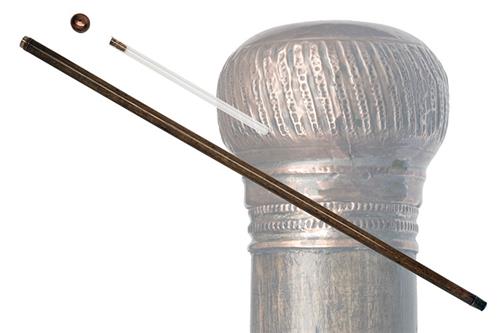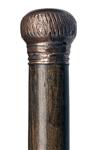Product Details
AN UNUSUAL GENTLEMANS WALKING CANE WITH INTERNAL TIPPLE-FLASK AND EROTIC STANHOPE,
late Victorian, the plain cane shaft 33in. in length with metal ferrule, copper coloured machine embossed turn-off pommel (possible originally plated) revealing an internal tubular spirit flask approximately 11 3/4in. in length with cork closure (some chipping at neck), the pommel itself with internal Stanhope of a nude
Other Notes: The name Stanhope comes from the lens' inventor, Lord Charles Stanhope, third Earl Stanhope, born 1753, died 1816. The 'Stanhope' lens began life as a simple one-piece microscope. In 1859 the design was modified by Rene Dagron, a French photographer and inventor and the first man to be granted a patent for microfilm. He modified the lens to act as a novelty miniature viewer, initially for use in toys and jewellery. During the siege of Paris (1870-1) in the Franco-Prussian War, his invention took on a whole new perspective as he developed method of sending microfilm messages via carrier pigeon across enemy lines and into Paris. Dagron photographed pages of newspapers in their entirety which he then converted into miniature photographs. He subsequently removed the collodion film from the glass base and rolled it tightly into a cylindrical shape which he then inserted into miniature tubes that were transported fastened to the tail feathers of the pigeons. Upon receipt the microphotograph was reattached to a glass frame and was then projected by magic lantern on the wall. The message contained in the microfilm could then be transcribed or copied. By 28 January 1871, when Paris and the Government of National Defense surrendered, it is estimated that over 115,000 messages were delivered to Paris by this method.
Please click HERE to view Terms & Conditions.
Estimate £120-180




